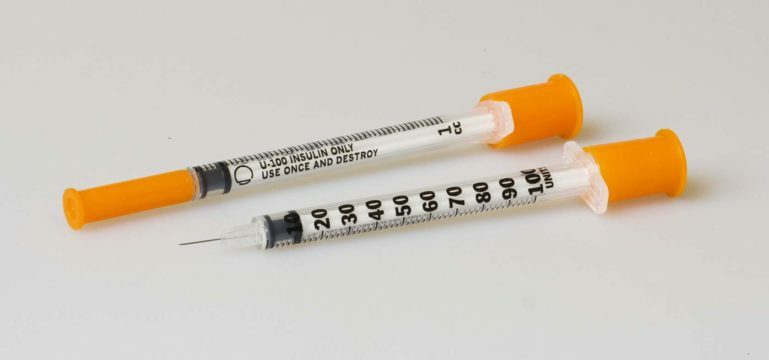This disease is one of the most common pathologies of the endocrine system. It is characterized by the fact that the body has problems with the production of the hormone insulin, which helps the glucose to be split in the blood.
For the production of an important hormone, the cells of the pancreas respond. In case of pathologies of this organ, insulin production decreases, or completely stops. Sugar accumulates in the blood, which leads to a sharp increase in its level and, thus, there is a threat of serious consequences for the child organism .
To protect your child from the onset of this unpleasant illness, any parent should know why it may occur. Knowing all the necessary information, you can take preventive measures in time, allowing you to preserve your child's health. Of course, there is such a factor that influences the development of the disease, as heredity. But in this case, with properly taken preventive measures, the onset of the disease can be delayed for many years.
Features of the disease in childhood

Diabetes is divided into two types: an insulin-independent type of disease and insulin-dependent. Children are most often diagnosed with an insulin-dependent species, called type I. This disease is life-long and has its own peculiarities of flow in childhood. This is due to the fact that the pancreas in children is very small. By the age of 12 years, it reaches a weight of about 50 grams. All metabolic processes in the child's body proceed much faster than in an adult. Completely the process of insulin production in the body is established only by 5 years. That is why children aged 5 to 12 years old are exposed to children's diabetes .For children with poor heredity, this period is critical. Since it is in childhood that the formation of the body occurs, the earlier a child has this disease, the more serious will be its course and its consequences will be more serious.
Causes of diabetes in children
Causes of diabetes in children can be varied. There are a number of both external and internal factors that can trigger the development of this disease in the child. To the most common reasons, because of what this disease appears in childhood, include:
- heredity;
- improper nutrition;
- disturbed diet;
- catarrhal diseases, or suffered severe viral diseases.
Overweight and malnutrition
If the family does not eat the right food, and the child consumes sweets, flour products and chocolate in a large amount, that is, easily assimilated carbohydrates, the load on the pancreas in the child's body is significantly increased. Gradually, this leads to depletion of the pancreatic cells. As a result, the amount of self-insulin produced gradually decreases, and eventually it can completely stop.
The development of obesity naturally leads to the accumulation of excess adipose tissue. And it, in turn, becomes a place in which synthesis of insulin is actively inhibited.
Constant colds
Frequent colds in the baby provoke activation of the immune system. Since immunity must protect the body from viruses and bacteria, with frequent colds, it is forced to constantly produce antibodies. If this process begins to be chronic, the immune system does not stop producing these antibodies even if there is no direct threat to the body. The result of such immune disorders is that the produced antibodies attack pancreatic cells, thereby independently destroying the .Being exposed to similar destructions, the pancreas stops to develop insulin necessary for high-grade activity of an organism.
Hereditary predisposition to diabetes

Heredity is a factor that can significantly affect the onset of the disease in the child. If we are talking about heredity on the part of parents, especially the mother, the likelihood of diabetes in a child is very high. It can manifest itself at the youngest age, and over time. If, despite everything, the mother who was diagnosed with diabetes had a decision to give birth - it is necessary to strictly control the blood glucose level during pregnancy .
This requirement is due to the fact that the placenta has the property of well sucking and storing sugar from the mother's blood. In the case of its elevated level, there is a regular accumulation of glucose in the tissues and the developing organs that develops in the fetus. This leads to the birth of a newborn with congenital diabetes.
Consequence of transferred diseases
Infectious diseases transferred by a child with a number of concomitant factors can trigger the onset of the disease as a serious consequence.
It is proven that the development of diabetes in a child is affected by diseases such as:
- viral parotitis;
- hepatitis;
- chicken pox;
- rubella.
Infection of the body with viruses that cause the development of these diseases, provokes the activation of a powerful immune defense. The antibodies produced by the immunity begin to destroy the pathogenic virus, and with it the pancreatic cells. As a result, there is a failure in the insulin production.
It is important to note that the onset of diabetes in the form of complications after the transfer of these diseases is possible only if the child has a hereditary predisposition.
Hypodinamy as a risk factor
Low mobility and the absence of even elementary physical activity can also cause the development of diabetes. Accumulation of adipose tissue will help suppress the production of insulin in the body. It is also proved that exercise can increase the work of cells responsible for the production of this hormone. A child who is systematically engaged in sports, the blood sugar level does not exceed the allowable rate.
What you need to pay attention to in time to notice the disease

It often happens that parents are accustomed to recognize the disease and begin to worry only after the manifestation of some specific symptoms. Tearfulness, frequent changes of mood and irritability can be perceived by many as mere childish whims or a sign of spoiling. Unfortunately, in some cases, such unreasonable behavior of the child can serve as a signal of early diabetes.
The whole point is that with the onset of this disease, insulin is not produced in the right amount. It does not help the sugar to be fully absorbed by the body. Cells of various organs, including the brain, receive less than the required amount of energy. This causes not only irritability, but also the constant lethargy, weakness and fatigue of the child.
Of course, these signs are not the main ones during the diagnosis of diabetes mellitus and can be caused by other diseases or reactions of the child's body. But still, since they help to suspect that something is wrong with a child's health, you should not ignore them. Signaling about the onset of the disease may also be other changes that parents should also not ignore:
- the child is constantly asking for a drink, he can not quench his thirst;
- seen increased appetite and simultaneous weight loss;
- sometimes vomits, the child complains of frequent nausea;
- there is frequent urination.
In the case of a systematic manifestation of several such symptoms or at least one of them, it is worthwhile to see a doctor who will prescribe the necessary diagnostics.
Symptoms of the disease
After this disease affects the child's body, it begins to show specific symptoms. The most frequent symptoms that accompany the development of diabetes in a child are:
- long non-healing wounds, frequent fungal skin lesions;
- weight loss and slow growth, problems with physical development;
- increased appetite and difficult to quench thirst;
- frequent urination and, in some cases, bedwetting.
Each symptom has its own causes and becomes a reaction of the body to a lack of insulin.
Polydipsia
Because an insufficient amount of insulin contributes to the accumulation of sugar in the blood, it becomes difficult for the kidneys to perform their filtering function. They are hard to cope with high sugar content. The load increases substantially, and they try to get an extra liquid out of the body, which makes the child feel an obsessive thirst.
Children can complain of dry mouth, noticeable dryness of the skin and its peeling. This situation is dangerous because not understanding what is happening, the child in huge quantities can drink juices, soda and other drinks that contain sugar. Such use of harmful liquid in large quantities only aggravates the development of diabetes in children.
Polyphagia - a constant feeling of hunger

Increased appetite and hunger is due to the fact that the cells of the whole body are experiencing an energy hunger. Glucose is simply washed out of the body with urine, without feeding the body at the proper level. Starving cells begin to send a signal to the child's brain that he does not have enough food and nutrients. A child can absorb food in huge portions, but the feeling of satiation with him persists for a short while.
Weight loss and slow growth
Despite increased appetite, a child with diabetes mellitus will not gain weight. Due to the constant energy hunger, the children's organism is forced to seek alternative sources of nutrition. In the body, an intensive process of destruction of fat and muscle tissue can begin. Also, a child with diabetes can greatly slow down body growth.
Bedwetting
Because of persistent thirst, the child begins to consume large amounts of fluid, which in turn leads to increased urination. The bladder with a plentiful drink is almost always in a filled state. If a child just goes to the toilet frequently during the day, then it becomes difficult for him to control this process.
Bedwetting can be one of the earliest symptoms of diabetes. It's worth worrying if you did not notice the nighttime urination in bed after the baby. When changing beds, you must pay attention to urine. It can produce a sharp, unpleasant odor of acetone, be sticky to the touch and after drying leave an unnatural white trace.
There is another symptom that needs to be paid attention in time. Since the children's urine in diabetes mellitus almost always contains acetone, when urinating, irritation of the external genital organs and genitourinary tract can occur. Very often children, especially girls, can complain of itching in the perineum.
Consequences of development of the disease in childhood
One of the main problems of this disease is the ability of diabetes to lower the immunity of the child. Any infectious diseases can be accompanied by serious complications. For example, a common cold can flow into pneumonia. Any scratches, abrasions, cuts and wounds can not heal for a long time. Perhaps frequent infection with fungal viruses, since immunity stops protecting the child's body properly.
Reducing visual acuity often becomes a consequence of this disease. This is associated with the energy hunger of cells and water imbalance in the body. Also, another major complication is known, which is known as the "diabetic foot".In the event that the sugar level is not controlled for a long time, irreversible pathological changes in the musculoskeletal tissue, vessels and nerves begin to occur in the body. The result is the defeat of the limbs, up to the formation of gangrene.
Prevention
- In order to protect the child from this disease, it is necessary to take preventive measures on a regular basis. First of all, you need to monitor the diet. The child should eat fractional, but often, about 5-6 times a day. Of course, the food should be balanced and contain all the vitamins necessary for the growing body.
- It is not necessary to completely exclude the sweet from the diet of healthy children, but the number of such products should be strictly controlled.
- If a child at an early age already has excess weight or the initial stage of obesity, parents are strongly encouraged to seek the advice of an endocrinologist. If necessary, the doctor will perform the diagnosis and be able to provide his recommendations. You can also visit a children's nutritionist, who is able to develop a system of not only useful, but also delicious food.
- Since physical activity contributes to the dissolution of glucose in the blood and reduces the level of sugar, they should not be neglected. About 2-3 times a week the child should be engaged in accessible and feasible physical exercises.
How to protect the smallest
from diabetes. Regarding infants, especially if their weight exceeds 4, 5 kg at birth or if there is a family predisposition to the disease, parents should not forget about the benefits of breastfeeding. If possible, the child is strongly recommended to breast-feed at least 1 year. This will help to strengthen children's immunity and reduce the likelihood of viral diseases, which can subsequently trigger the development of diabetes.
If for objective reasons, breastfeeding is not possible, it is very important to approach the choice of alternative nutrition. Avoid artificial mixtures that contain cow's milk protein. It is proved that it depresses the work of a child's pancreas, which may result in the cessation of insulin production by its cells.
Such simple preventive measures can reduce the likelihood of a child's diabetes, even if the family has a similar propensity. Diabetes, like many other diseases, is much easier to warn than to live with it for the rest of your life.



